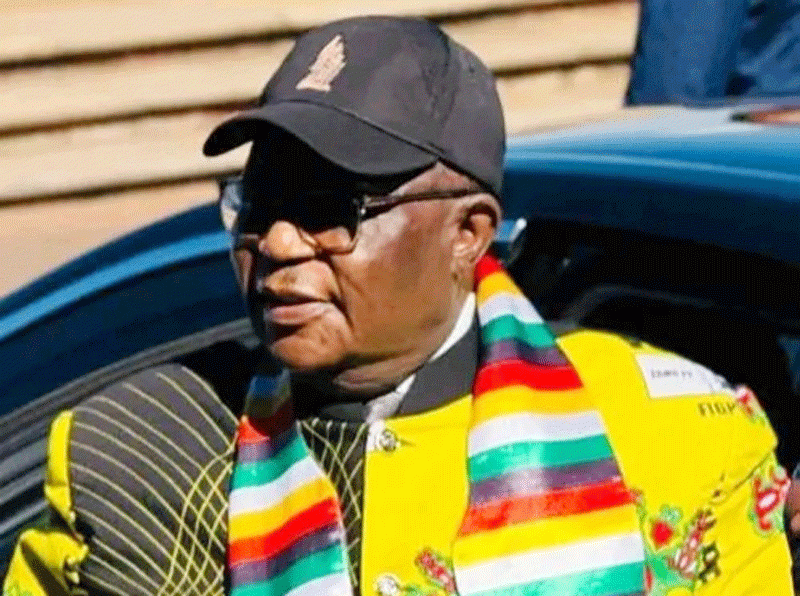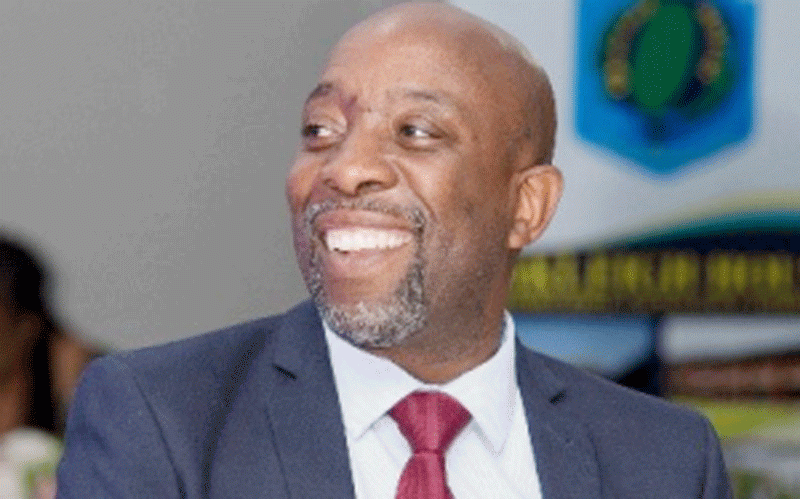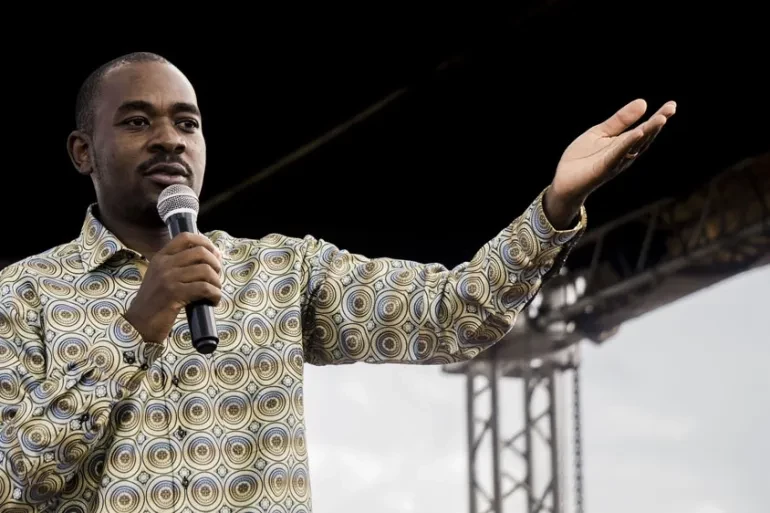
Mathew Boniface believes it is only by the grace of God that he was alive when he was thrown out of a commuter omnibus that was side-swiped by a bus, leaving 28 people dead on the spot along the Harare-Bulawayo Highway last Thursday.
BY BLESSED MHLANGA
The death toll from the accident — which has been declared a national disaster by President Robert Mugabe — has since risen to 31 after more people either died on their way to hospital or after admission.
Boniface (38) from Kadoma is one of the only two survivors from the Mercedez-Benz Sprinter that was involved in the horror crash 20km outside Kwekwe.
Yesterday, he described his survival as nothing short of a miracle and believes the hand of God plucked him from the jaws of death when he saw it coming. He is recovering at Kwekwe General Hospital after suffering head injuries.

When the accident happened, Bonface was sitting next to the commuter omnibus driver, Bhekithemba Tshuma — who died on the spot.
He said they saw the Pfochez bus that was heading to Harare approaching.
“We saw the bus’ left tyre burst and pieces of it peeling off,” Boniface said.
- Chamisa under fire over US$120K donation
- Mavhunga puts DeMbare into Chibuku quarterfinals
- Pension funds bet on Cabora Bassa oilfields
- Councils defy govt fire tender directive
Keep Reading
“From where I was sitting, it was clear that the bus driver was struggling to control it.
“Our driver remained on the road, stubbornly refusing to pull off until the point of impact.
“Had he pulled off the road, the accident could have been avoided altogether, because from where I was, the kombi driver could have reacted swiftly to save lives.”
Zimbabwe Republic Police officer commanding Midlands Province, Senior Assistant Commissioner Abigail Moyo corroborated Boniface’s version of events.
Moyo told Local Government minister Saviour Kasukuwere that the accident could have been avoided.
She said if the driver of the Mercedes-Benz Sprinter had reduced speed and pulled off to the left, the deaths could have been averted.
Boniface escaped with head injuries and is expecting to be discharged from hospital soon.
Save for Boniface and another passenger, everyone in the commuter omnibus died at the scene of the accident.
The other survivor was treated at the outpatients department and discharged on the same day.
Boniface said he and the other passenger were thrown out of the commuter omnibus because they were not putting on seat belts.
“God had a reason for saving us because given the carnage, it is hard to believe that someone walked out without injuries and that I am still alive,” he said.
Vinice Mhuka is the only other victim who was aboard the Pfochez bus still hospitalised, after eight of her fellow passengers were treated and discharged.

Mhuka was glad to be alive, but said the horror of the accident would haunt her for the rest of her life, she said.
She did not see how it happened, but all she remembers is being thrown from her seat. Mhuka survived because she did not land on a hard surface.
“I did not see much, but I know if I was seating on the three-seater side of the bus, I could have been among the dead,” she said.
“I was thrown to that side and landed on another person which saved me from serious injuries or even death. What I can tell you is that the bus was speeding. We had just left Gweru in less than 20 minutes and were almost in Kwekwe when the accident happened.”
Sounds of screams of agony and pain, the sight of the dead and blood flowing everywhere on the scene continues to haunt Mhuka in her dreams as she attempts to find sleep on her hospital bed.
Mhuka cringed as she tried to describe the trip that ended in tragedy. She was on her way back home to Kwekwe from Gweru.
A Kwekwe fireman who attended the accident scene said what he saw was not for the faint-hearted.
He said they had to pick up pieces of human flesh, and the worst part was trying to separate the bodies of the two drivers from the wreckage.
“There was blood all over the place when we got to the scene and you could hardly notice the commuter omnibus because it had been reduced to a ball of steel, indicating a high velocity impact,” said the fireman, who is not authorised to speak to the media.
“We spent a lot of time trying to retrieve the dead, cutting through steel and having to pick pieces of human flesh because some had been severed off their bodies.”
Just months ago, seven Sawa security guards lost their lives around the same spot in another head-on collision, which shocked many people.
Kwekwe mayor Matenda Madzoke said that stretch of the highway was a known black spot.

“That stretch has always been a black spot, but over the past few years, accidents had stopped happening there. Now in just five months, we have had about five fatal accidents, this being the worst. It seems it’s starting again,” he said.
Madzoke went to the scene of the accident and visited the injured in hospital as a member of the district disaster response team.
“I have never seen anything like that in my life. This is the worst accident that I think my eyes have seen. A heartbreaking and shocking tragedy that befell Kwekwe and the nation,” he said.
Zimbabwe Optometric Association president Richard Maveneka said investigators should establish if the commuter omnibus driver’s eyesight was not to blame for the accident.
“That the passenger saw the bus wheel peeling off and the driver struggling to control his bus does not mean the commuter omnibus driver saw it,” he said.
“He could have had poor eyesight and without testing, nobody can tell.”
ZOA is pushing to ensure that all drivers have periodic eye tests to improve safety on the roads, saying some accidents could be as a result of poor eyesight.
The organisation believes law enforcement agents mainly concentrate on mechanical and physical evidence when dealing with road accidents.
The accident also tested Kwekwe General Hospital’s capacity to handle disasters and its status as a referral hospital.
Doves Funeral Parlour had to come to the aid of the hospital after the institution’s mortuary failed to handle the number of dead bodies, which had piled up on its floors.
Eleven of the 30 bodies had to be transferred to Doves Funeral Parlour because the 60-body capacity morgue was full.
Midlands provincial medical superintendent Patricia Mapanda told Kasukuwere, Health minister David Parirenyatwa and Midlands State Affairs minister Jason Machaya that Kwekwe hospital was in a bad state.
She told the ministers during a visit to the hospital that most of the institution’s machinery had become antiquated.
Mapanda said the hospital could not offer quality health care to the accident victims.
Mhuka was still waiting to undergo an X-ray examination so that doctors could attend to her and the physiotherapist was hamstrung because in the absence of an X-ray, he could not do his work.
Mapanda said one accident victim, who needed to be transferred to Harare, was still at the hospital two days later since one of the ambulances which was supposed to transport him was still either in the capital or in Gweru.
She told the ministers that the hospital’s laundry machines were not in good working condition, forcing the institution to handwash blankets and clothing, exposing staff to risk.
The patient who was supposed to be transferred to Harare was in great pain and could hardly speak, resulting in The Standard crew having to abandon attempts to interview him.










